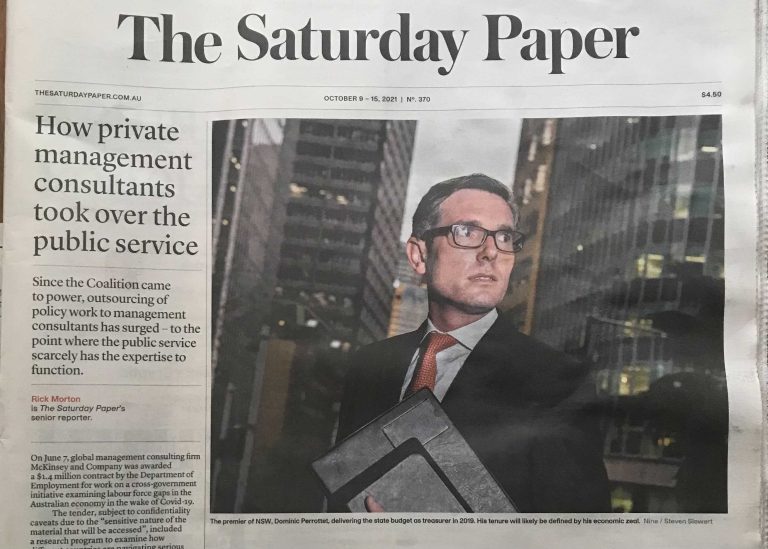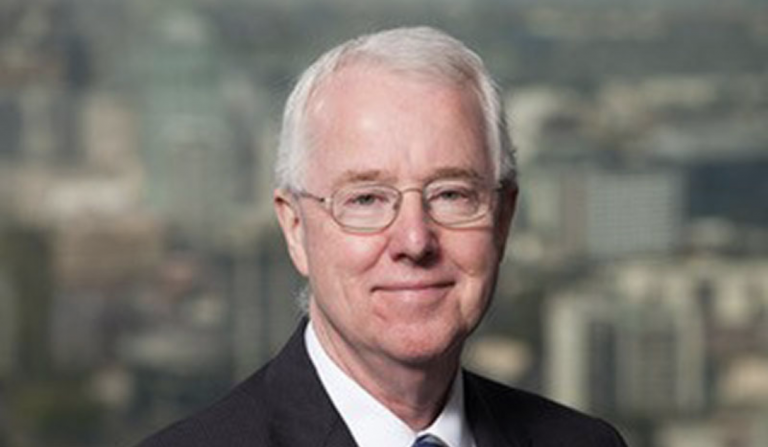The Australian Right’s major think-tank, the Centre for Independent Studies, celebrated its 30th anniversary this year. The event passed without notice for most people on the Left and progressive side of politics.
But we ignore the CIS at our peril. Rather, we can draw valuable lessons from its accomplishments. Given that there are several quiet moves to establish new progressive think tanks, it is worth exploring the reasons for the success of the CIS.
 |
|
Thanks to Fiona Katauskas |
The CIS is well funded by the corporate sector. It has a substantial staff and is able to make grants to support research. Its views attract the attention of both federal and state governments. Articles written by its researchers are often published in major newspapers. The CIS helps set a political agenda for Australia.
To have a new progressive think tank with a quarter of the influence of the CIS would be counted as a big achievement.
But the secret of the CIS’ success is not money or corporate support.
It is ideas. While progressives may detest the ideas promoted by the CIS, we need to understand that the effectiveness of any think tank depends on the quality and substance of its ideas.
In many ways the development of new ideas is the hardest thing of all. The CIS began in 1976 and was the brainchild of a crusading school teacher, Greg Lindsay, who originally worked out of his garden shed.
He and his band of supporters had radical new ways of looking at the world and the energy of true believers. They called conferences and put forward bold new ideas. They were ‘economic rationalists’ or what we now call ‘neo-liberals’. They were a tiny minority.
Their obvious ambition to become influential and their method of building their organisation are both instructive. Instead of approaching potential ‘big name’ supporters to lend their credentials to CIS, Lindsay and his team targeted like-minded people who were, in the beginning, few in number. It was not a board of big name directors that was important but the formation of this core group of like-minded supporters. The economics departments of universities were their main recruiting ground.
Initially the ideas of the CIS genuinely shocked many on the Right. The CIS took on the sacred cows of the Old Right, which was built on the traditional conservative veneration of the nation, moral values and the family. Neo-liberal ideas undermine all three. Globalization destroys the nation, free market values discard moral values as irrelevant and the deregulation of working conditions make shared family time harder. But the New Right did not allow the shibboleths of the Old Right to silence it. They challenged, debated and even denounced their forefathers.
The danger of trying something different was that these fragile new ideas could easily be swamped by the complacency and weight of existing conservatism. The first stage for the CIS was to clarify their free market ideas and begin to examine how they might connect and apply to the existing conditions.
Only once the CIS had cemented its ideas and made an impact through conferences and seminars did a small amount of corporate support begin. It came from mining industry boss, Hugh Morgan, who was then a maverick in the world of business. Big business did not rush to the CIS in the first place – it supported entrenched and complacent organisations like the Institute of Public Affairs (IPA).
Looked at coolly, the success of the CIS is an inspiring testament to the power of ideas to transform the political landscape and set an agenda. It can give us hope that other more progressive ideas might also reshape the world and fashion it to more humane ends.
Of course funding is important but the question is always: for what? A well funded think tank that repeats the same old ideas in the same old way will get nowhere, even if the ideas are terribly worthy.
So the importance of fresh ideas is the first lesson for progressives – but there are two more.
The second lesson is that bringing new ideas into reality means challenging people on your ‘own side’. It means saying the unsayable and disturbing a smug complacency amongst the progressives. It means challenging long-held, sacred beliefs. It means being regarded as a heretic.
In my own work I have tried to provoke a debate around accepted ideas. These include dominant visions of multiculturalism, which is defined as an endless celebration of diversity, with no regard to common humanity. Existing progressive ideas on the family also need to be challenged. Allowing the Right to ‘own’ family values is mistaken. The real enemies of family life are casual jobs, long work hours and inadequate support for parents who care for their children. My book also argues that the debates which Noel Pearson began need to be picked up and taken further. His ideas represent a new way of looking at political issues well beyond the standard indigenous issues. Too often he is dismissed by progressives.
The third lesson from the Right is to be prepared for times to change.
Times change. They always do and they always will, no matter how gloomy things look. The New Right had developed its ideas for a number of years before they struck any resonance. In the 1970s when the old Keynesian mechanism failed and unemployment rose at the same time as inflation, there was a crisis. Into this breach stepped the New Right with its new free market ideas.
The same kind of turnabout will happen in Australia if progressives can rethink their political framework – perhaps with the help of a new think tank. Climate change will soon make a deep impact on the lives and minds of more and more Australians. Progressive must be ready with new ideas to meet this window of opportunity. The strain on working families will become more and more obvious. The inability of affluence and hyper consumption to nourish the human soul will increasingly assert itself. New approaches will be relevant, if we can only agree on them.
So, on the progressive side of politics where are the new ideas burgeoning? I have to confess to a vested interest in this, since identifying such ideas was my motive in writing my recent book ‘Beyond Right and Left’.
My abbreviated list of people with new ideas is as follows:
At the Canberra-based think tank, the Australia Institute and through his books, Clive Hamilton has pioneered new ways of thinking about the economy, environment and consumption.* Judith Brett of La Trobe University and Marian Sawer of ANU have identified how the Liberals now use a discourse of ‘cultural elites vs the people’ as a key strategic stance. The Liberal Party now presents itself as the party of popular nationalism. Robert Manne has spotlighted the moral bankruptcy of the Howard government on refugees and on ‘political correctness’. Noel Pearson has said what was unsayable on issues of indigenous future. Barbara Pocock has targeted work-family balance as a key issue for rebuilding a progressive majority. Anne Manne warns of the commodification of family life and caring. On the Labor side, Lindsay Tanner and Julia Gillard have proposed new approaches, and Tanner’s book ‘Crowded Lives’ has valuable insights into social policy. Mark Latham had new ways of articulating politics which wrong-footed Howard for the first time. Bob Brown of the Greens articulates the importance of environment issues in ways that connect with many ordinary Australians.
I don’t agree with everything all these people say. But they are pushing the boundaries of tired and stale left wing ideas — or finding new ways of highlighting long standing issues.
Without rethinking ideas even the best funded think tank in the world cannot play its part in turning around the political climate. And that, in the end, is its real purpose.
* [Ed.] The sentence beginning ‘At the Canberra-based think tank…’ was inadvertantly omitted from the original version of this article.



